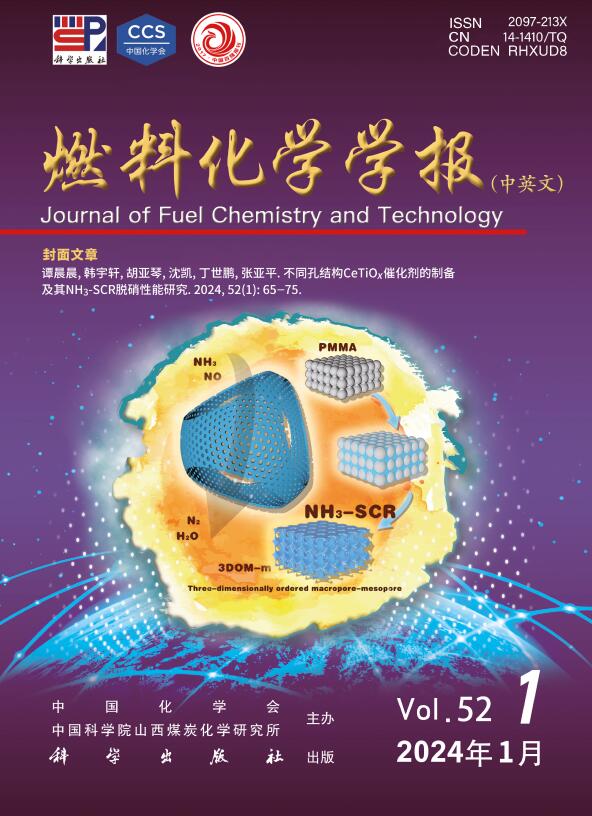机器学习辅助过渡金属磷化催化剂电解水制氢的研究
Q3 Energy
引用次数: 0
摘要
近年来,水电解制氢已成为中国能源转型的重要战略,设计高效的析氢反应催化剂是一个关键问题。因此,过渡金属磷化物(TMPs)因其价格低廉、产氢效率高而被认为是水电解中重要的非贵金属催化剂。然而,高活性TMPs催化剂的实验筛选既耗时又具有挑战性。本研究为基于机器学习和大数据分析的高效HER电催化剂的快速筛选提供了一种简单有效的方法。开发了四种机器学习算法,即支持向量回归(SVR)、k近邻回归(KNN)、随机森林回归(RF)和极端梯度增强(XGBoost),用于预测HER文献中报道的各种过渡金属磷化物的催化性能。通过RMSE和R2对四种算法进行评价,发现RF算法对过电位的预测能力较好,而XGBoost算法对Tafel斜率的预测能力较好。结果表明,Ni、Co和Fe的含量对催化性能有显著影响,今后可以通过对其含量的精细调整制备出高活性的催化剂。本文章由计算机程序翻译,如有差异,请以英文原文为准。
Machine learning assisted study of the transition metal phosphides catalyst for the water electrolysis to produce hydrogen
In recent years, hydrogen production by water electrolysis has become an important strategy of energy transformation in China, where the design of efficient catalysts for hydrogen evolution reaction (HER) is a key issue. In this regard, transition metal phosphides (TMPs) are considered important non-precious metal catalysts in water electrolysis owing to their low price and high hydrogen production efficiency. However, experimental screening of highly active TMPs catalysts is time-consuming and challenging. This study provides a simple and effective method for rapidly screening highly efficient HER electrocatalysts based on machine learning and big-data analysis. Four machine learning algorithms, namely support vector regression (SVR), K-nearest neighbour (KNN), random forest regression (RF) and extreme gradient boosting (XGBoost), were developed to predict the catalytic performance of various transition metal phosphides reported in the literature in HER. After evaluating the four algorithms by RMSE and R2, it was found that the RF algorithm has excellent prediction ability for overpotential, while the XGBoost algorithm predicts better for the Tafel slope. It is concluded that the contents of Ni, Co and Fe have a significant influence on the catalytic performance and highly active catalysts may be prepared by fine adjustment of their contents in the future.
求助全文
通过发布文献求助,成功后即可免费获取论文全文。
去求助
来源期刊

燃料化学学报
Chemical Engineering-Chemical Engineering (all)
CiteScore
2.80
自引率
0.00%
发文量
5825
期刊介绍:
Journal of Fuel Chemistry and Technology (Ranliao Huaxue Xuebao) is a Chinese Academy of Sciences(CAS) journal started in 1956, sponsored by the Chinese Chemical Society and the Institute of Coal Chemistry, Chinese Academy of Sciences(CAS). The journal is published bimonthly by Science Press in China and widely distributed in about 20 countries. Journal of Fuel Chemistry and Technology publishes reports of both basic and applied research in the chemistry and chemical engineering of many energy sources, including that involved in the nature, processing and utilization of coal, petroleum, oil shale, natural gas, biomass and synfuels, as well as related subjects of increasing interest such as C1 chemistry, pollutions control and new catalytic materials. Types of publications include original research articles, short communications, research notes and reviews. Both domestic and international contributors are welcome. Manuscripts written in Chinese or English will be accepted. Additional English titles, abstracts and key words should be included in Chinese manuscripts. All manuscripts are subject to critical review by the editorial committee, which is composed of about 10 foreign and 50 Chinese experts in fuel science. Journal of Fuel Chemistry and Technology has been a source of primary research work in fuel chemistry as a Chinese core scientific periodical.
 求助内容:
求助内容: 应助结果提醒方式:
应助结果提醒方式:


